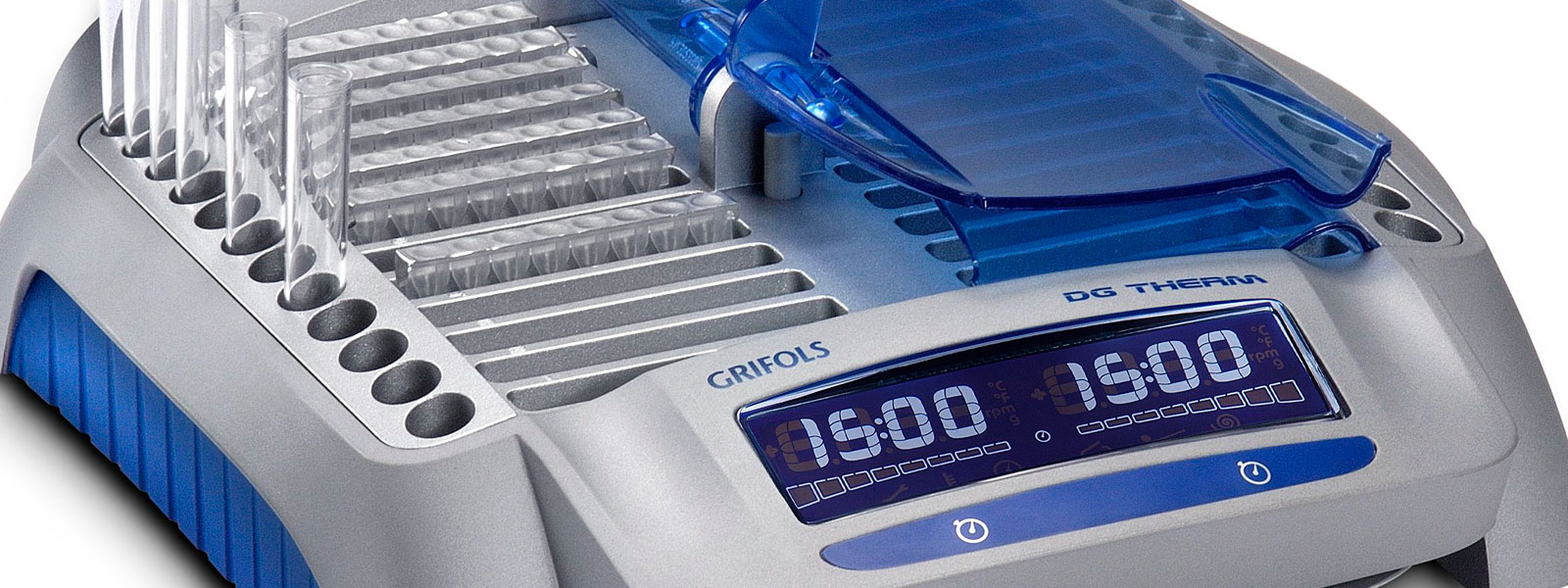Gel card incubator
Streamlining lab procedures
Technical file
Type of innovation: Device
Scope: Clinical Analysis
Innovation leader: Shared leadership
Year: 1989
Period: 1972-2002
Geographical scope: International
Economic impact: Medium
Level of innovation: Evolutionary
Patent: No
Interdisciplinary connections: -
“Grifols has a track record of innovation in the development of incubator technology for specific purposes, and… in 1989, Grifols launched an incubator to streamline the gel agglutination technique of blood typing.”
Regulating temperature in the lab
Devices for regulating temperature are a basic feature of the clinical laboratory. They may be general-purpose immersion thermostats for heating water baths. Or they can be lamps, hotplates, or incubators. Grifols has a track record of innovation in the development of incubator technology for specific purposes and, as early as 1950, the company designed and produced a lamp to facilitate the slide method of blood grouping.
In 1989, Grifols launched an incubator to streamline the gel agglutination technique of blood typing. This technique consists of adding sample red blood cells to microtubes containing a gel that holds the blood grouping reagent. The gel acts as a filter. Following incubation and centrifuge, agglutinated cells are trapped at the top of the tube, while non-agglutinated cells pass through the gel and appear at the bottom, thus determining blood type.
Compelling innovation
In 1988, Swiss company DiaMed launched a new reagent for the groundbreaking gel card method for determining blood groups. Quick to see the new technique's market potential, Diagnostic Grifols secured the rights to distribute DiaMed's gel cards in Spain and Portugal.
Diagnostic Grifols' R&D team worked on ways to automate the technique. One of these was an incubator that enabled analysts to pipette samples into the gel cards as they were incubated at a temperature of 37ºC, adding a timer to the device. This eliminated the preparatory stage of pipetting, placing the cards in a heating apparatus, then taking them out again.
Overcoming its initial resistance to an innovation conceived and developed by a company from a country with little pedigree in clinical diagnosis, DiaMed ended up buying and distributing the device worldwide under its own name.
New versions, different brands, new functions
The original design of the ID Incubator (1989) served as the template for several versions marketed under Grifols own DG brand (1991-1997), as well for models for other manufacturers (MTS, Micro Typing System, DiaMed's manufacturer in the US; DiaMed's ID brand, or the GP models for Gen Probe).
Some fully automated analyzers developed later on by Grifols to process Gel Cards, such as the Diana (1995), WADiana (1998), and Erytra (2010) also incorporated an incubator module, and enjoyed considerable commercial success as Grifols advanced to the full automation of this blood typing technique. Others, developed for Gen Probe, were adapted to incubate tubes, including the Twin Incubator, with two incubation areas that could be set at different temperatures.
In 2006, Grifols developed the DG Therm, a digital gel card incubator with a completely new design.

Bibliography
Avellà, R., & Miquel, B. (Eds.). (2015). Cuando un sueño se cumple. Crónica ilustrada de 75 años de Grifols. Barcelona: Grupo Grifols, S.A.
Related innovations
DEVICE
Slide lamp for blood group determination